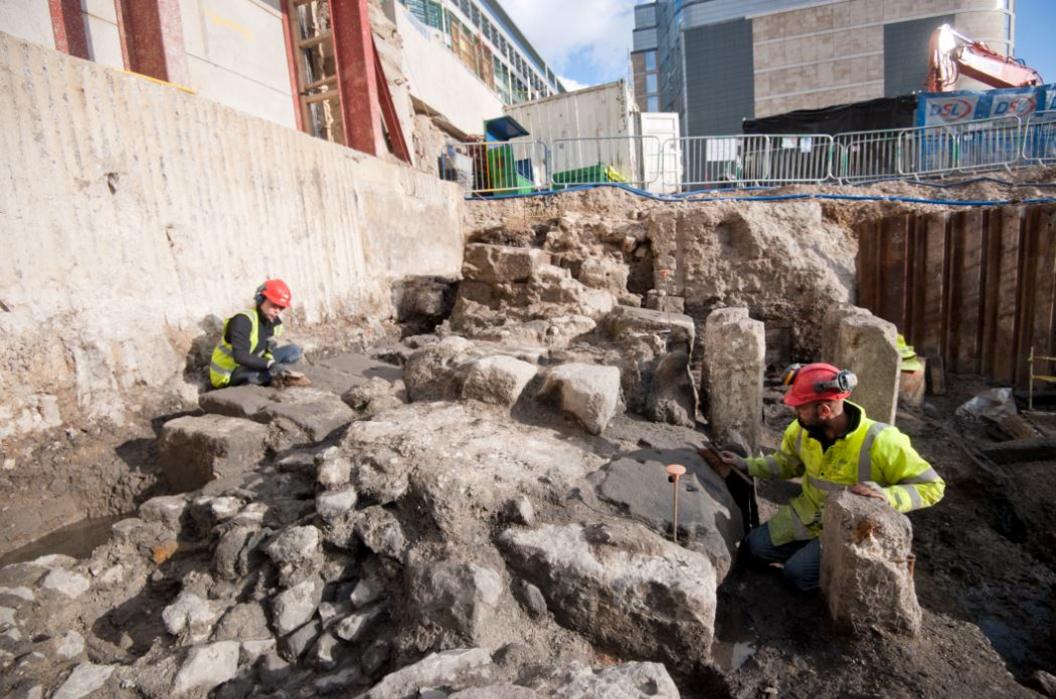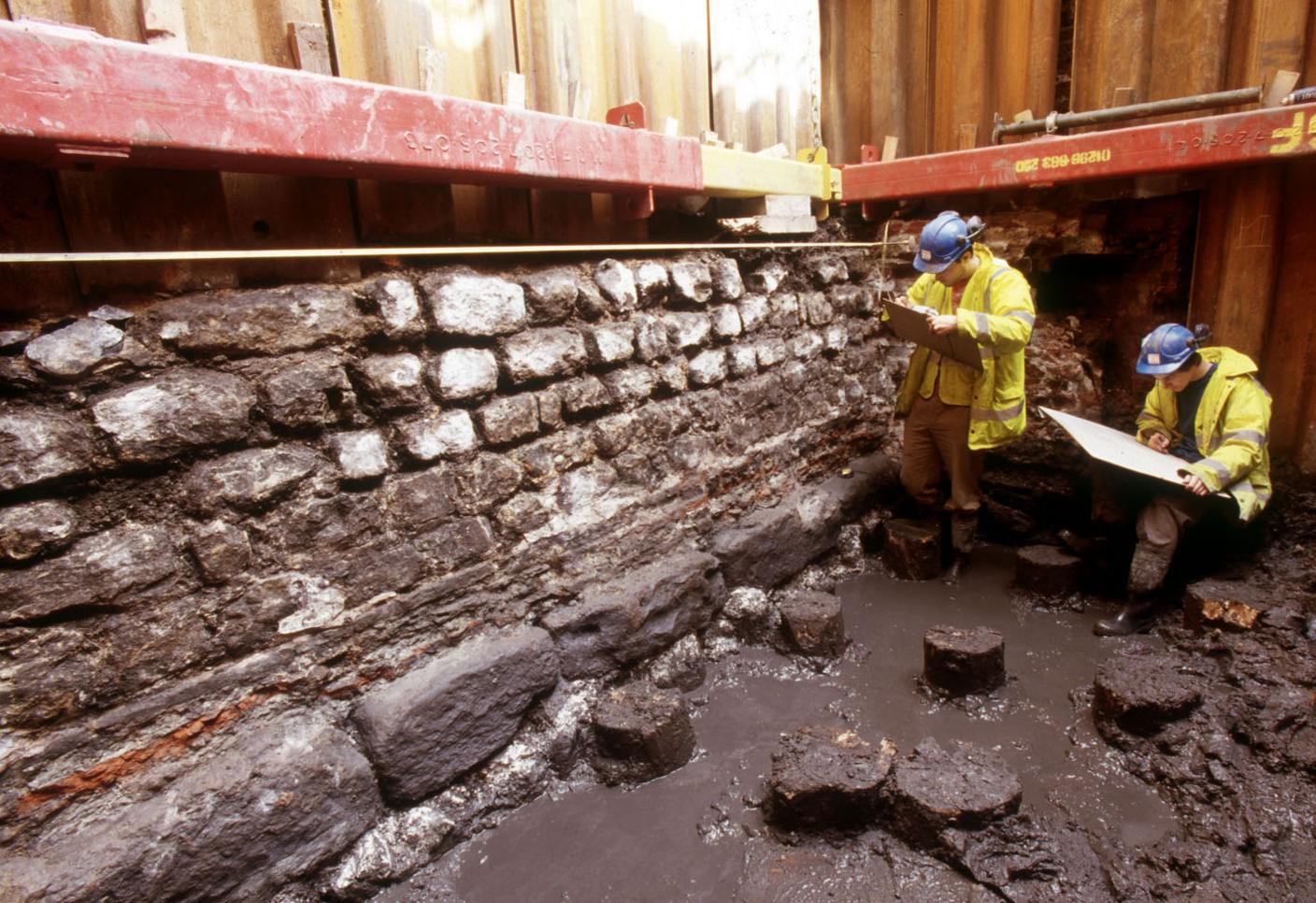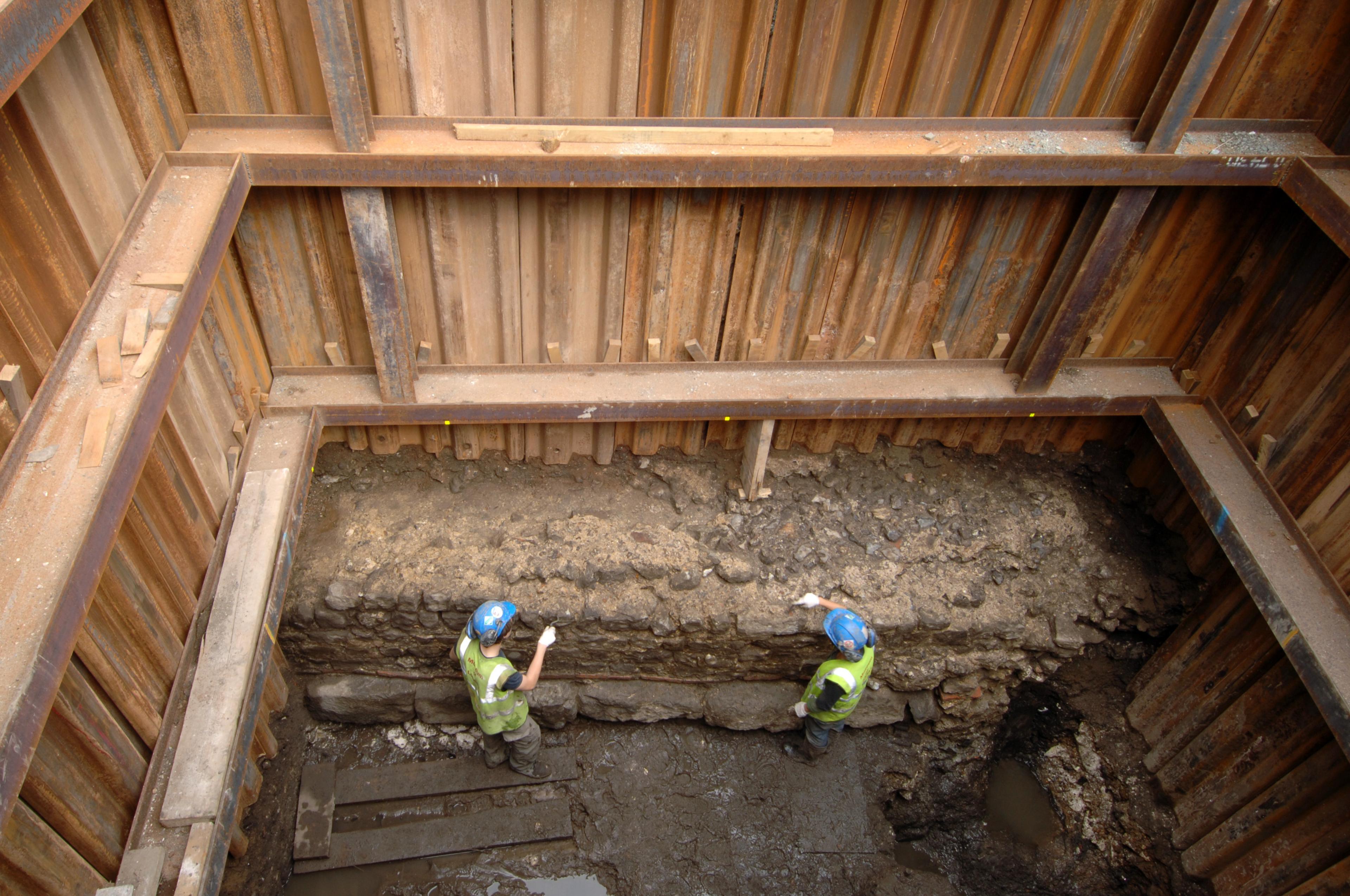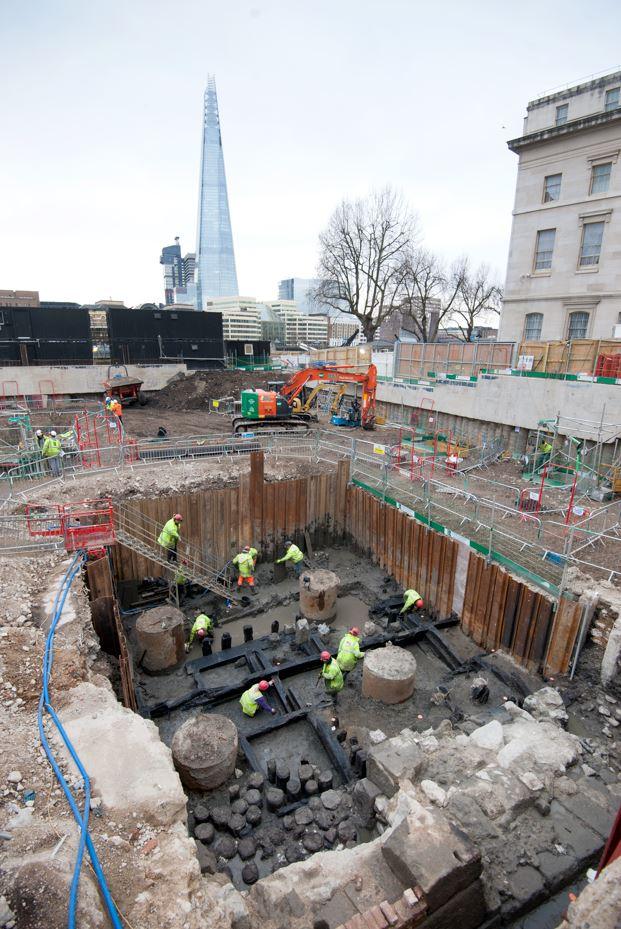Roman wall recognised as national monument

The remnants of the wall will remain underground
At a glance
Until 2006, the wall had lain undiscovered under central London since Roman times
It has now been recognised by Historic England as a listed monument
It has wooden wharf and quay structures which are remarkably well-preserved
- Published
An underground Roman wall in central London has been recognised as a listed monument by the National Heritage List for England.
The relatively unknown riverside wall was a massive stone structure in Roman London that connected to the landward wall, now known as London Wall.
The newly listed wall is now below modern buildings along Upper and Lower Thames Street, which once formed the north foreshore of the River Thames.
The designation has been confirmed by the Department for Culture, Media and Sport following Historic England’s advice.

It features well-preserved wooden wharf and quay structures
Excavations by the Museum of London Archaeology between 2006 and 2016, which followed archaeological work during the 1970s and 1980s, uncovered sections of the wall over three sites.
These sites now have the same level of protection and recognition as the only other known section of Roman riverside wall, at the Tower of London.
The remains of the newly listed section of riverside wall feature well-preserved wooden wharf and quay structures from both the Roman and medieval period, which were uncovered alongside the wall.
More London archaeology news
- Published4 December 2018
- Published27 February 2023
- Published2 February 2023
- Published19 February 2019
Construction of the riverside wall severed the city’s connection to the quayside, indicating that at the time defence took priority over river trade.
Together the landward and riverside walls formed a vast circuit. No other settlement in Roman Britain had defences enclosing such a large area, a feat reflecting the status of the provincial capital, Historic England said.
Much of the wall has been destroyed as London has expanded, over the past 1,700 years.

The wall lay undiscovered for thousands of years
Duncan Wilson, Historic England chief executive, said: “Even in a really dense city like London, built up over 2,000 years, there are still mysteries to be revealed right beneath our feet.
"The riverside wall remains an intriguing element of Roman London which raises almost as many questions as it answers. The construction of the riverside wall effectively cut off the once bustling port, but why? It seems to suggest a major move towards defence at a time of uncertainty for the Roman provinces.
“By adding these sites to the National Heritage List we recognise their national significance, and can closely manage their conservation so that they remain part of London’s rich story.”

The Roman remains are now below modern buildings along Upper and Lower Thames Street

Follow BBC London on Facebook, external, Twitter, external and Instagram, external. Send your story ideas to hellobbclondon@bbc.co.uk, external